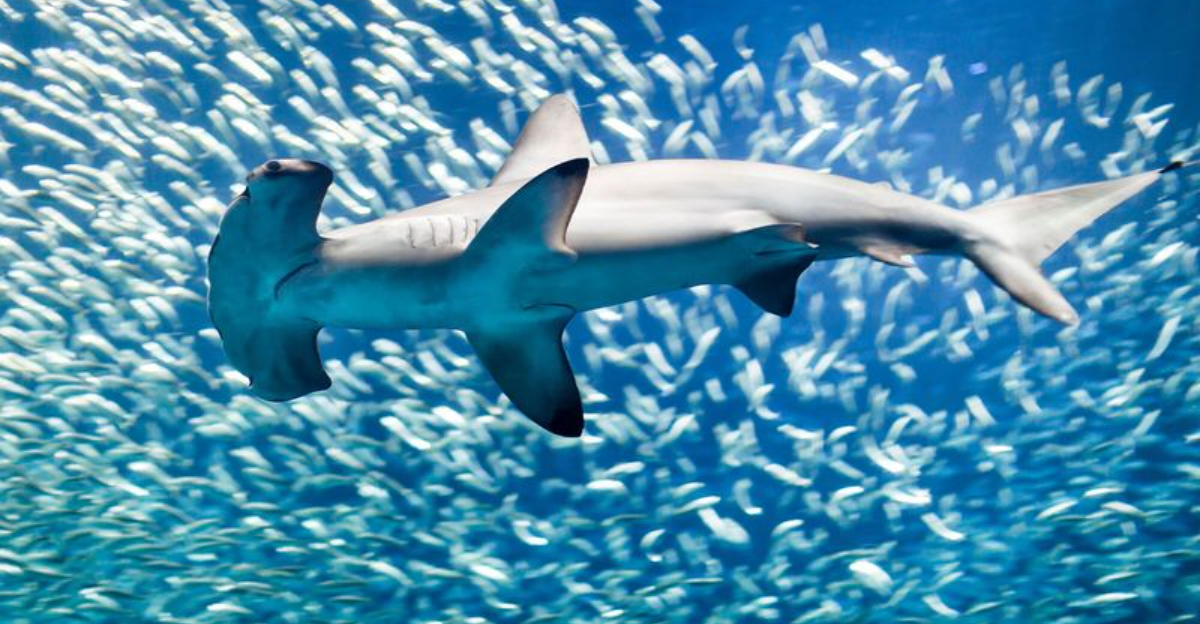Hammerhead sharks are one of the most fascinating and distinctive marine creatures in the ocean. Known for their hammer-shaped heads, these sharks have intrigued scientists and ocean enthusiasts alike.
Let’s dive into 14 unique facts about hammerhead sharks that highlight their extraordinary nature and adaptations.
1. Unique Head Shape
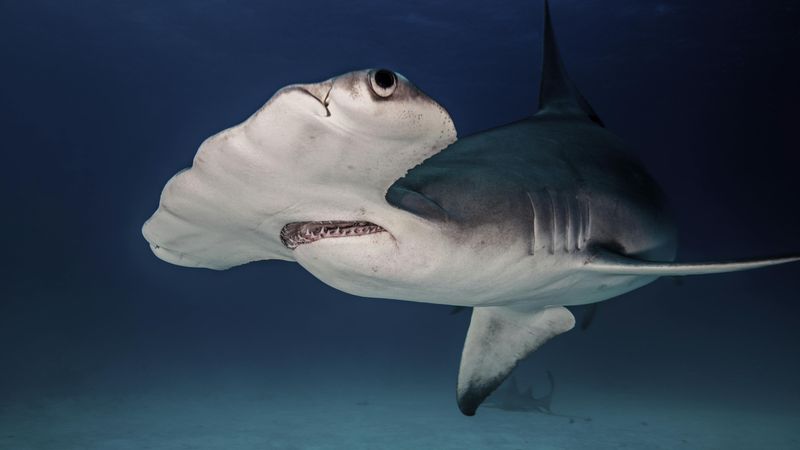
The head of a hammerhead shark is unlike any other in the animal kingdom and serves several purposes. Its distinctive hammer-like shape, known as a cephalofoil, allows the shark to have enhanced sensory perception.
With eyes positioned on the sides, hammerheads can scan a wider area than other sharks, giving them a unique advantage in spotting prey. This structure also accommodates an array of electroreceptive organs called ampullae of Lorenzini.
These organs enable the shark to detect the electric fields produced by prey, even those buried in sand. The wide head provides a larger area for these sensors, enhancing their hunting capabilities. Additionally, the hammerhead’s head aids in maneuverability.
The wide, flat structure acts like a wing in water, helping the shark make quick, sharp turns. This adaptability is crucial in catching agile prey like stingrays, making the hammerhead a formidable predator in its habitat.
2. Diverse Species
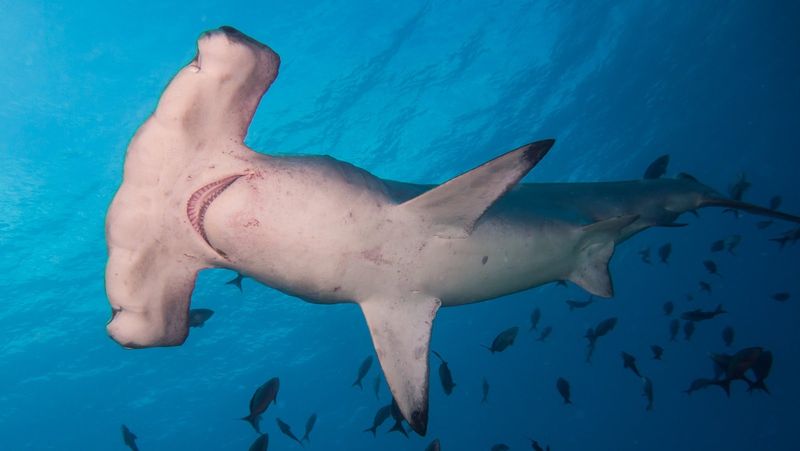
There isn’t just one type of hammerhead shark, but an entire family with nine distinct species. These species vary significantly in size, shape, and behavior, each adapted to specific environments and ecological niches.
The great hammerhead is the largest, reaching up to 20 feet in length. On the smaller end of the spectrum is the bonnethead shark, which grows to about 3 to 4 feet. Each species has evolved unique adaptations to thrive in their particular habitats.
Their diversity showcases the adaptability and evolutionary success of hammerhead sharks. From the warm waters of the Atlantic and Pacific Oceans to the temperate seas near Australia, these species inhabit a wide range of environments. Recognizing the diversity among hammerhead sharks helps in understanding their ecological roles and the conservation needs of each species.
3. Social Behavior
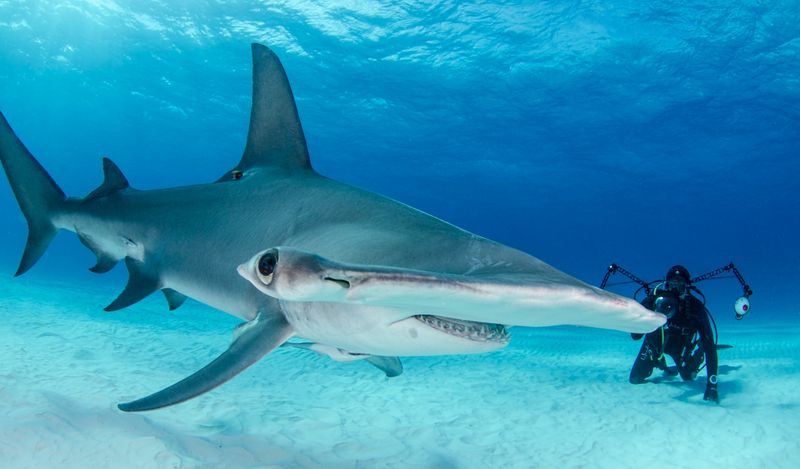
Unlike many other shark species, hammerhead sharks exhibit fascinating social behavior. They are often found swimming in schools, particularly during the day. These groups can range from a few individuals to over a hundred, depending on the species and environmental conditions.
The reasons behind this schooling behavior are not entirely clear but are thought to include protection from predators, enhanced foraging efficiency, and social interaction. Schooling may also play a role in reproduction, allowing individuals to find mates more easily.
Observing hammerhead sharks in large groups offers insights into their complex social structures. This behavior is particularly prominent in species like the scalloped hammerhead, known for forming large schools in specific locations like the Galápagos Islands.
Understanding these social dynamics is crucial for conservation efforts, as it affects how populations are managed and protected.
4. Diet And Hunting Techniques
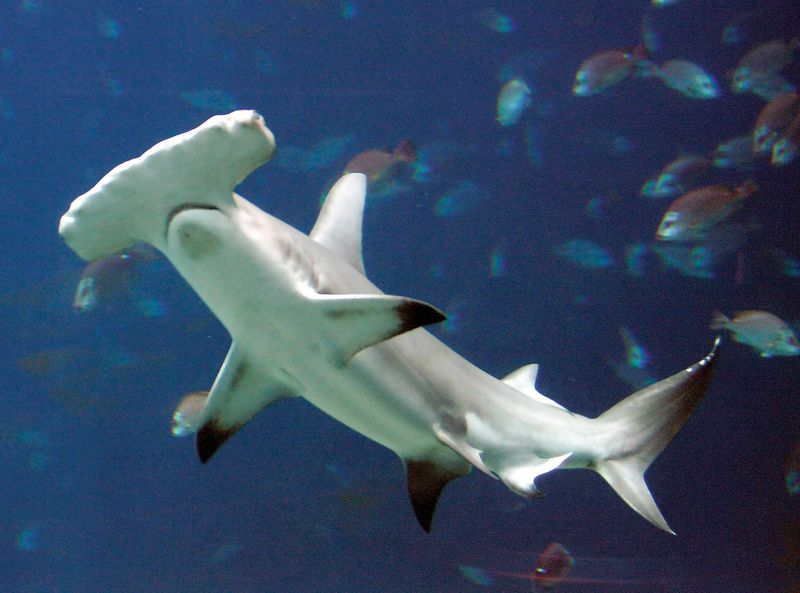
Hammerhead sharks are adept hunters, employing unique techniques to catch their prey. They have a varied diet that includes fish, octopuses, and crustaceans, but they are particularly fond of stingrays.
Their wide-set eyes and enhanced sensory perception allow them to detect prey hidden in the sandy ocean floor. They use their heads to pin down stingrays, employing swift, agile movements to secure their meal.
The electroreceptive capabilities of their cephalofoil head also play a role in locating prey, making them efficient hunters. The diet and hunting methods of hammerhead sharks demonstrate their adaptability and role as apex predators in their ecosystems.
By understanding their feeding habits, researchers can gain insights into the health and dynamics of the marine environments they inhabit. This knowledge is vital for ensuring the sustainability of both hammerhead populations and their prey.
5. Reproduction And Lifespan
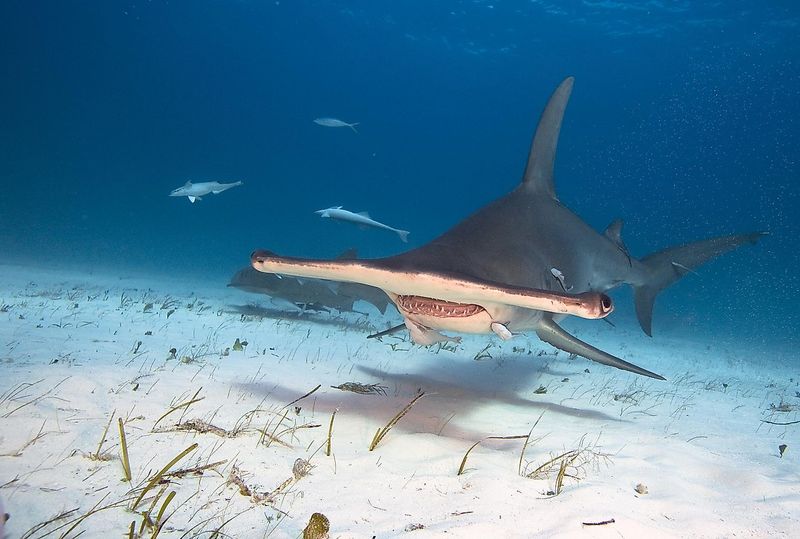
Hammerhead sharks have a unique reproductive process that sets them apart from many other marine species. They are viviparous, meaning they give birth to live young rather than laying eggs. A female hammerhead can give birth to a litter ranging from 6 to 50 pups, depending on the species.
The gestation period for these sharks can vary but typically lasts between 9 and 12 months. Once born, the pups are relatively independent, quickly learning to navigate the ocean and hunt for themselves.
This independence is crucial, as young sharks face many predators and challenges in the open sea. The lifespan of hammerhead sharks varies among species but generally ranges from 20 to 30 years. Understanding their reproductive strategies and life expectancy helps in conservation planning, ensuring that populations are maintained and protected for future generations.
6. Habitat And Distribution
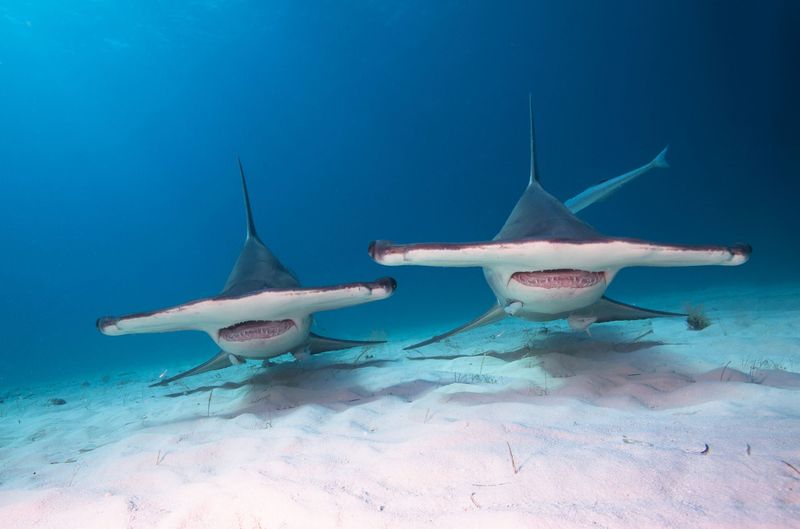
Hammerhead sharks have a broad distribution, inhabiting coastal regions and open oceans across the globe. They are found in warm, tropical waters, typically along continental shelves and around islands. Different species of hammerheads prefer varying habitats, from shallow reefs to deeper offshore waters.
The great hammerhead, for example, is often found in coastal areas, while the smooth hammerhead may venture into cooler, temperate seas. Their wide distribution highlights the ecological importance of hammerhead sharks and their adaptability to different marine environments.
By studying their habitat preferences, scientists can better understand the factors affecting their distribution and the potential impacts of climate change on their populations. This knowledge is essential for developing effective conservation strategies and protecting these iconic marine predators.
7. Conservation Status
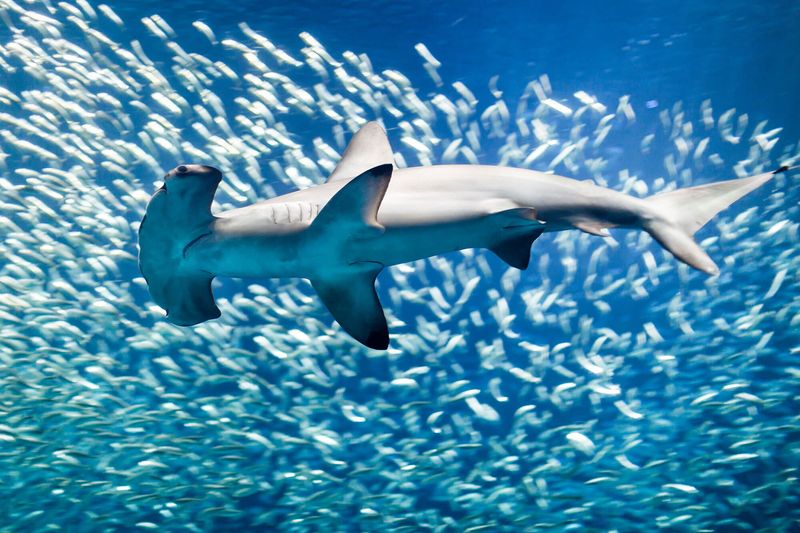
The conservation status of hammerhead sharks varies by species, but many face significant threats from human activities. Overfishing, habitat destruction, and illegal finning have led to declining populations for several species, including the great and scalloped hammerheads.
International conservation efforts aim to protect these sharks through stricter fishing regulations and habitat preservation. Organizations like the International Union for Conservation of Nature (IUCN) have listed several hammerhead species as endangered or vulnerable, highlighting the urgent need for action.
Protecting hammerhead sharks requires global cooperation and public awareness. By understanding the threats they face and supporting conservation initiatives, individuals can contribute to preserving these remarkable creatures for future generations.
Continued research and monitoring are also vital to assess the effectiveness of conservation measures and adapt strategies as needed.
8. Unique Sensory Abilities
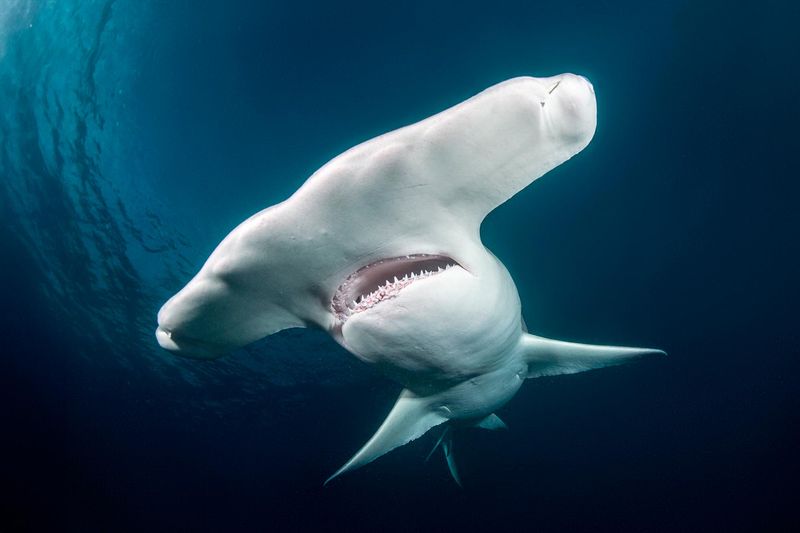
Hammerhead sharks possess an array of unique sensory abilities that set them apart from other marine predators. Their head, or cephalofoil, is equipped with electroreceptive organs known as ampullae of Lorenzini.
These organs allow them to detect electric fields generated by other organisms, aiding in hunting and navigation. The wide-set eyes of hammerhead sharks provide them with exceptional binocular vision, offering a panoramic view of their surroundings.
This adaptation not only enhances their ability to spot prey but also aids in avoiding potential threats. These sensory adaptations make hammerhead sharks highly effective hunters. Their ability to detect minute electrical signals enables them to locate prey buried beneath the sand.
This extraordinary sensory perception underscores their role as apex predators in marine ecosystems and highlights the evolutionary marvels of these enigmatic creatures.
9. Hammerhead Sharks In Culture
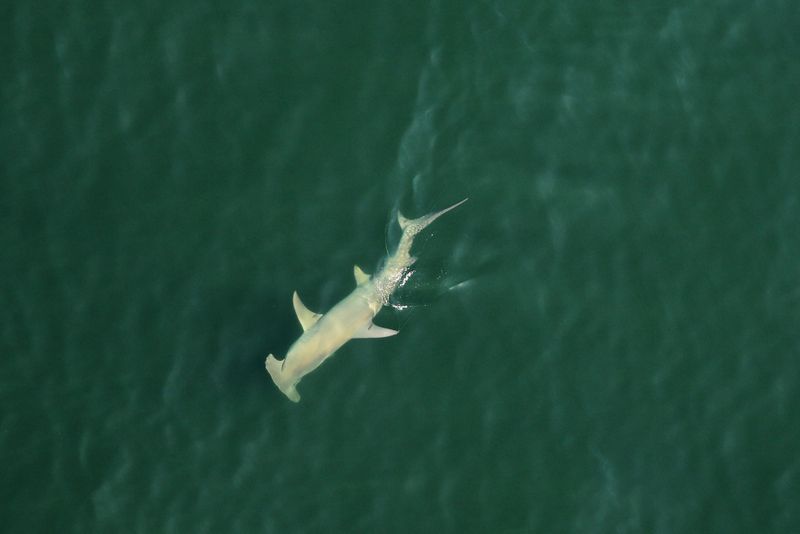
Hammerhead sharks have held a place in human culture and mythology for centuries. In Polynesian culture, they are often seen as symbols of protection and are featured in tribal tattoos and artwork. The distinctive shape of the hammerhead is frequently incorporated into traditional designs, reflecting their significance in island communities.
In modern culture, hammerhead sharks have been popularized through documentaries, films, and aquariums, sparking fascination and awe. Their unique appearance and behaviors make them a favorite subject for marine enthusiasts and researchers alike.
Understanding the cultural significance of hammerhead sharks enriches our appreciation of these remarkable creatures. It highlights the connection between humans and the natural world, encouraging a sense of stewardship for marine life.
By respecting and preserving the habitats of hammerhead sharks, we honor their place in both nature and culture.
10. Threats From Climate Change
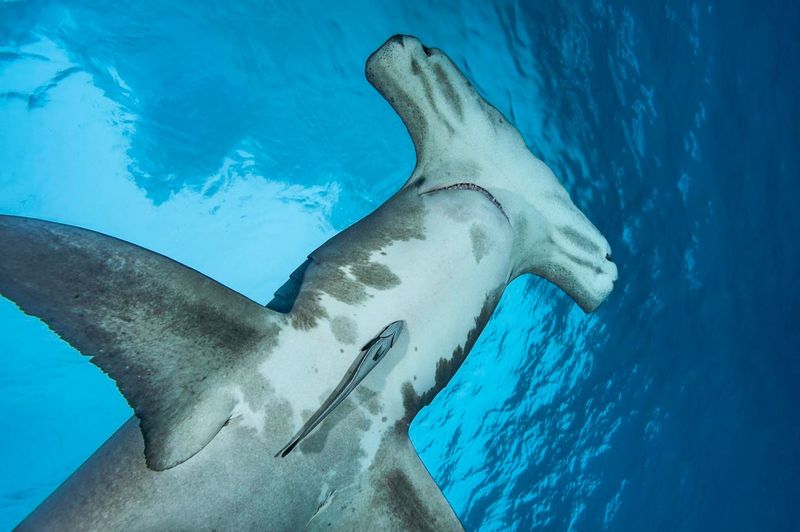
Climate change poses a significant threat to hammerhead sharks, impacting their habitats and survival. Rising ocean temperatures can affect their distribution, forcing them to migrate to cooler waters.
This shift may lead to increased competition for resources and challenges in finding suitable breeding grounds. Ocean acidification, another consequence of climate change, can impact the sensory abilities of hammerhead sharks.
Changes in water chemistry may affect their electroreception, making it more difficult for them to locate prey and navigate their environments. Addressing climate change is essential for the survival of hammerhead sharks and marine ecosystems at large.
Reducing carbon emissions and protecting critical habitats are vital steps in mitigating these impacts. By taking action against climate change, we contribute to the preservation of these iconic predators and the health of our oceans.
11. Role In The Ecosystem
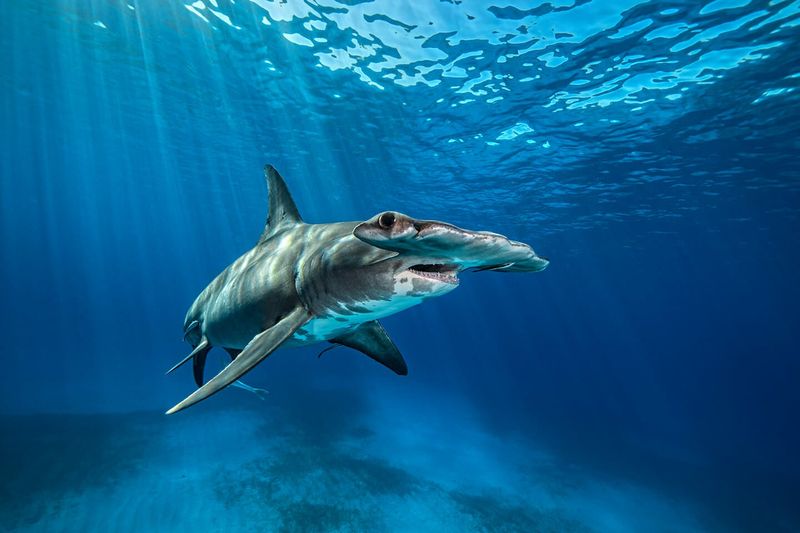
Hammerhead sharks play a crucial role in marine ecosystems as apex predators. They help maintain the balance of oceanic food webs by regulating the populations of their prey, such as fish and octopuses. This predatory role ensures the health and diversity of marine environments.
Their presence can influence the behavior and distribution of other marine species, contributing to the overall dynamics of the ecosystem. By preying on weak or sick individuals, hammerhead sharks help promote healthy fish populations.
Understanding the ecological role of hammerhead sharks emphasizes the importance of their conservation. Protecting these predators is vital for maintaining the integrity of marine ecosystems.
Conservation efforts must focus on ensuring sustainable populations of hammerhead sharks, as their decline could have far-reaching effects on ocean health and biodiversity.
12. Mysterious Migration Patterns
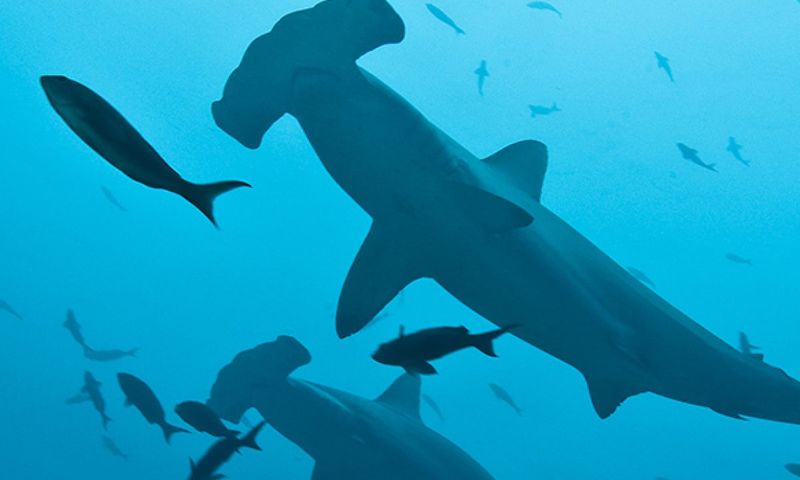
The migration patterns of hammerhead sharks remain one of the most intriguing aspects of their behavior. Many species undertake long migrations, traveling vast distances across oceans. These journeys are often related to breeding, feeding, and environmental conditions.
Satellite tagging and tracking have provided valuable insights into these migrations, revealing complex routes that span thousands of miles. For example, the scalloped hammerhead is known to migrate between coastal and offshore areas, utilizing specific corridors for travel.
Understanding these migration patterns is crucial for conservation efforts. By identifying critical habitats and migration routes, researchers can develop strategies to protect these areas from human-induced threats.
This knowledge also aids in predicting how climate change and other environmental factors may alter the movements of hammerhead sharks in the future.
13. Adaptations For Survival
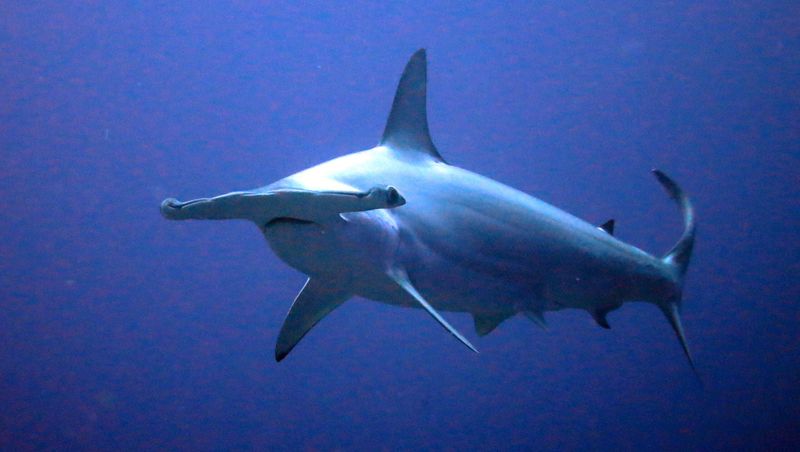
Hammerhead sharks have evolved a range of adaptations that enhance their survival in diverse marine environments. Their streamlined bodies enable efficient swimming, reducing drag and allowing them to cover large distances with minimal energy expenditure.
The placement of their eyes on the sides of their heads gives them a wide visual range, helping them spot predators and prey alike. Additionally, their gills are well-adapted for extracting oxygen from water, supporting their active lifestyle and predatory nature.
These adaptations highlight the evolutionary success of hammerhead sharks. By understanding how they have evolved to thrive in various conditions, scientists can gain insights into the challenges these sharks face in changing environments.
This knowledge is important for developing effective conservation strategies to ensure their continued survival in the face of environmental pressures.
14. Interactions With Humans
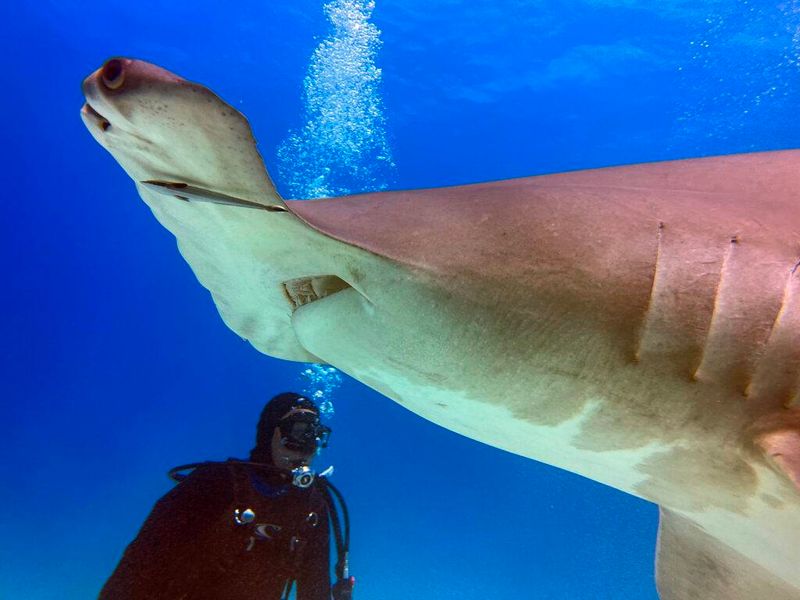
Interactions between hammerhead sharks and humans are relatively rare but can be fascinating. These sharks are not typically aggressive towards humans, and most encounters occur when divers seek them out for observation.
Hammerhead sharks are popular attractions for ecotourism, with dive sites around the world offering opportunities to see them up close. These interactions can promote awareness and appreciation of marine life, fostering support for conservation efforts.
However, human activities pose significant threats to hammerhead sharks, including overfishing and habitat destruction.
By promoting responsible tourism and advocating for sustainable fishing practices, we can help protect these magnificent creatures. Encouraging positive interactions and understanding between humans and hammerhead sharks is essential for their conservation and the health of marine ecosystems.

